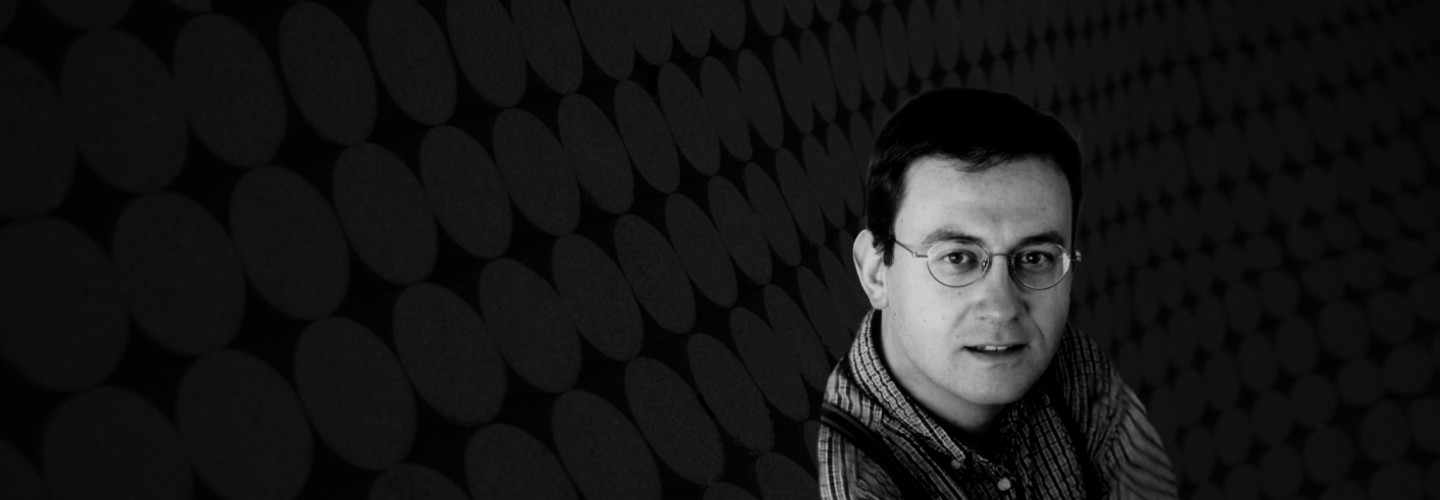

Georges Lentz
Jerusalem (after Blake)
Short instrumentation: 3 3 3 0 - 4 3 3 0 - perc(4), pno, cimb, e.guit, electronics, str(14 14 12 10 8)
Duration: 25'
Instrumentation details:
1st flute (+picc)
2nd flute (+picc)
3rd flute (+picc)
1st oboe
2nd oboe
3rd oboe (+c.a)
1st clarinet in Bb
2nd clarinet in Bb
3rd clarinet in Bb (+bass cl)
1st horn in F
2nd horn in F
3rd horn in F
4th horn in F
1st trumpet in C
2nd trumpet in C
3rd trumpet in C
1st trombone
2nd trombone
bass trombone
1st percussion
2nd percussion
3rd percussion
4th percussion
cimbalom
piano
electric guitar
electronics
violino I (desk 1)
violino I (desk 2)
violino I (desk 3)
violino I (desk 4)
violino I (desk 5)
violino I (desk 6)
violino I (desk 7)
violino II (desk 1)
violino II (desk 2)
violino II (desk 3)
violino II (desk 4)
violino II (desk 5)
violino II (desk 6)
violino II (desk 7)
viola (desk 1)
viola (desk 2)
viola (desk 3)
viola (desk 4)
viola (desk 5)
viola (desk 6)
violoncello (desk 1)
violoncello (desk 2)
violoncello (desk 3)
violoncello (desk 4)
violoncello (desk 5)
double bass (desk 1)
double bass (desk 2)
double bass (desk 3)
double bass (desk 4)
Lentz - Jerusalem (after Blake) for orchestra and electronics
Translation, reprints and more

Georges Lentz
Lentz: neues WerkOrchestration: für Orchester und Elektronik
Type: Studienpartitur (Sonderanfertigung)
Sample pages
Audio preview
Work introduction
Jerusalem (after Blake) was inspired by the poetry and visual art of William Blake (1757-1827), that great visionary of English Romantic literature who remained completely misunderstood and ignored by his contemporaries and only gained recognition one hundred years after his death, in no small part due to the advocacy of 20th century writers such as W. B. Yeats and Aldous Huxley. Today of course, Blake is a classic of English literature and widely regarded as one of the strangest, most fascinating writers of his time.
For several years now I have been reading (and trying to understand!) Blake’s so-called Prophetic Books. These are difficult works that abound in surreal visions in both words and images. Blake, a trained graphic artist, illustrated his books himself with the help of a printing technique of his own invention. Blake’s pictorial worlds, with their multitudes of bleak fiery landscapes, their hosts of sinister angels, starry night skies, interwoven muscular bodies, heavenly gates, distorted faces, monsters, ominous cathedrals, wavy robes, hair manes etc. etc. are stylistically far ahead of the artist's time, or at least very hard to anchor within it. Some elements are reminiscent of the dark world of the Spanish artist Goya, others of Art Nouveau, even early Picasso! Blake’s accompanying poetry is every bit as overwhelming in its mighty visionary language. “Jerusalem. The Emanation of the Giant Albion” (1804-1820), the author’s last, longest and perhaps most extraordinary book is a high point in both his literary and visual oeuvre and it is the book which, above all others, has been captivating me for years. I admit that my success in comprehending Blake is still rather limited, but my fascination is undiminished. (Note: this poem is not to be confused with the hymn “And did those feet in ancient time / Walk upon England's mountains green”, also known as ‘Jerusalem’, also by Blake, but unrelated).
It would be easy of course to dismiss Blake’s "Jerusalem. The Emanation of the Giant Albion" as the self-absorbed ravings of a lunatic cut off from the real world – and considered in a purely literal way, it may well be just that! Nonetheless, to my mind nothing could be further from the essence of Blake’s vision and message. Blake writes about the Fall of Man, the End of the World, the Apocalypse - all very old-fashioned concepts, one might think, with no relevance whatsoever to our world today. But how about our own world? Is it so much more sane? When planes intentionally crash into skyscrapers, when innocent people are beheaded in front of a camera to avenge a madly twisted conception of God, when money and meanness trump reason and compassion, when in full view of an approaching ecological catastrophe we keep steering cheerfully towards the abyss - if that is our world, then it might seem reasonable to assert that we too live in somewhat apocalyptic times. For Blake, ‘Jerusalem’, like so many things in his work, is a multi-layered concept: it is at once the Heavenly City, man’s final goal, but it is also our own terrestrial world. Considered in the word’s latter meaning, we might do well to heed the poet’s warning when he exclaims: “Awake! Awake Jerusalem!”
The beginning of Jerusalem (after Blake), with its dark ‘trumpets of the apocalypse’, I see as ‘the end of the world’. The last section, on the other hand, is like brushing aside a veil and entering into a different world. I dedicate this ending to the victims of another plane tragedy – that ill-fated flight MH 370, which on March 8, 2014 disappeared off the radar without a trace of its 239 passengers and probably crashed into the Indian Ocean, for some mysterious reason thousands of miles from its scheduled flight path. Leading up to this final section of the work, a lilting barcarole (Venetian gondolier's song) could be seen as evoking gently lapping waves, only to suddenly be disrupted in its peacefulness by an altogether more sinister aspect of water: a violent crash, and human bodies trapped at the bottom of the ocean!
When people in the towers of New York made their final frantic phone calls, the world heard the desperate human side of the apocalypse. There were no calls from the passengers of the MH 370. I’d like to think that the final sounds of my piece (soft, tinny pre-recorded brass sounds played via 7 smartphones from the back of the hall) might represent those phone calls that never were – a brief elegy for those who disappeared. There is no certainty of course that the MH 370 incident was an act of terrorism. Nonetheless, the possibility remains and its mystery haunts me. Therefore, by extension I'd like to dedicate Jerusalem (after Blake) to the memory of all victims of violence, madness, fanaticism and hatred.
Georges Lentz © 2016
The first performance of Jerusalem (after Blake) took place at the Luxembourg Philharmonie on January 16, 2015 with the Orchestre Philharmonique du Luxembourg conducted by Duncan Ward. The Australian premiere was given by the Sydney Symphony Orchestra conducted by David Robertson at the Sydney Opera House on February 21, 2015. The work was also performed by the ORF Radio Orchestra at Musikvereinssaal in Vienna as part of the Wien Modern Festival on November 13, 2016 and by the St Louis Symphony, David Robertson cond. in April 2017. Brett Dean conducted the work in Melbourne in 2018, and Robertson will conduct it again with the Pittsburgh Symphony in May 2020.
